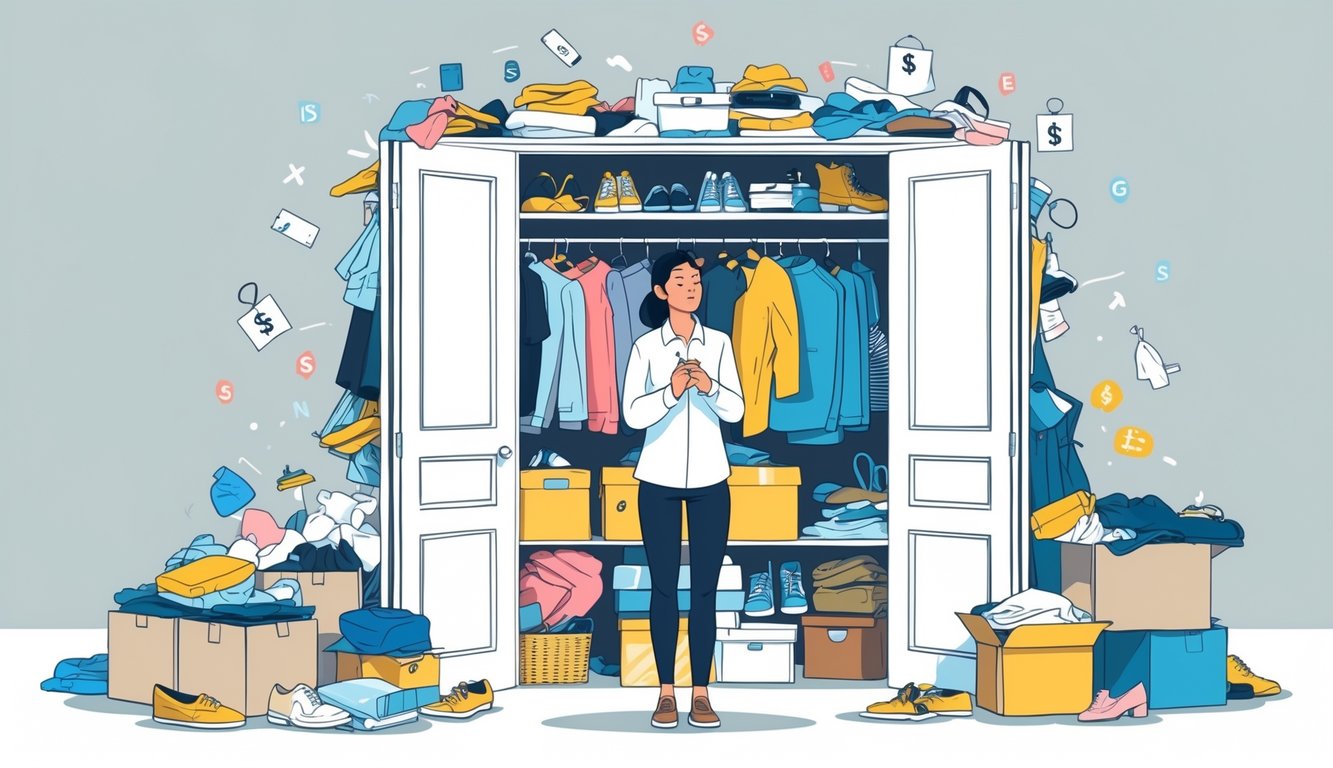
Smart Shopping: Breaking the Impulse Cycle
Every time I declutter, it’s another heap of stuff nobody remembers buying—shoes with tags, thirty-eight white shirts, all nearly identical. Noticing how planned purchases don’t lead to guilt, but random grabs just clog up space? That’s the wake-up call. If 73% of Americans admit to regular impulse buys, it’s not just me. It’s pretty much everyone.
Making a Shopping List and Sticking to It
I’m hunched over my phone, hammering out “laundry detergent, oat milk, black t-shirt.” Supposedly, a list keeps me on track. Supposedly. But somehow, frozen churros sneak on there, and—boom—my “quick trip” turns into a $70 disaster. Don’t ask me how.
Finance types love to push these neat, color-coded shopping lists—pantry, produce, whatever—like it’ll magically stop you from grabbing five near-identical t-shirts just because Target’s lighting is flattering. I mean, I get it, lists help. There’s even a study or something about how people with lists overspend less. But do I really need to be reminded that a $4.99 throw pillow is not, in fact, a necessity? Endcap displays are evil.
And then, I’ll have my list, but I’m in the baking aisle, staring at boxed cake mix that looks like a vacation in a box. My list just sits there, mocking me, like, “Did you really come here for novelty sprinkles?” Sometimes I forget the most important item: “Don’t buy another pair of joggers, you absolute clown.” Never makes it on the list.
Practicing Mindful Purchasing Decisions
Impulse buying has this little gremlin voice, right? “C’mon, just toss it in—worry later.” Then I find the thing two months on, next to the bread machine I also never use. I started making myself wait 24 hours before buying anything, no matter how much it’s “calling my name.” Even for a jacket on super sale. I hate it, but it works.
Apparently, the “impulse cycle” is exposure, trigger, rationalization, purchase, regret, and then, because I’m a genius, repeat. I read about it here, and yeah, they claim that even a one-minute pause can derail the whole thing. Sometimes I’ll tally up the cart and ask myself, “Would I rather spend this on a cavity filling?” Suddenly, the portable blender doesn’t seem so urgent.
I’ve even asked store employees about stuff—like, “Does anyone actually wear velvet leggings?” One woman just laughed and admitted she impulse bought them, too. At least I’m not alone in my weakness. My fallback: “Will I be mad when I rediscover this during the next closet purge?” Usually, yes. But sometimes, I buy the mug anyway. Because chaos. Because I’m weak.
Budgeting and Saving Money After a Closet Cleanout
Every time I dump my closet on the bed, I get this wave of regret. The money, the wasted space, the “clearance” shirts with tags still on. I never find the receipts—probably for the best. Upside? I get to pretend I’m in control by scribbling out a budget that, let’s be honest, I’ll probably ignore.
Setting Clothing Budgets for Future Purchases
Can I walk past a “40% off” sign without blacking out? Doubtful. After last year’s mess, I finally wrote out a monthly clothing limit—on actual paper, because apps are a lie. Bureau of Labor Stats says the average American spends $1,800 a year on clothes. I checked my own total. It’s worse. Not proud.
Forget “aspirational” wardrobes—whatever that is. Cash envelopes actually help me; if the “clothes” sleeve is empty, I’m done, even if there’s a sale. Martha Stewart’s tips beat any YouTube haul for real advice. If I go off the rails, I check receipts, cringe, and cut back. Sometimes I cut deep.
Tracking Spending Patterns and Goals
Tracking? Ha. I try. I start with an app, lose steam, switch to sticky notes, then end up screenshotting my bank statement like that’ll save me. If I don’t set weekly reminders, I forget everything. Eventually, I notice I’m buying shoes like I’m a centipede and never replacing socks.
Honestly, charts work. Pie charts, bar graphs, whatever makes me feel bad enough to stop. I color-code “essentials” and “just because” and usually, the “just because” wins. If I don’t set a goal—like, $500 for one blazer instead of five garbage shirts—I get nowhere. These tips help a little. Writing out “Europe trip” as my reason to save is motivating, until I blow it on a flash sale. Whoops.



